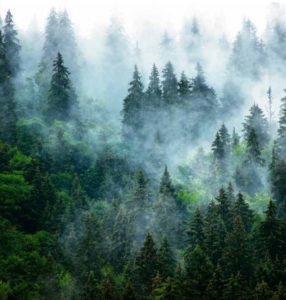Blue is the New Green
Posted: November 29, 2021Click here to purchase our Beetle Kill Pine flooring.
Click here to purchase our Beetle Kill Pine Wall and Ceiling boards.
________________________________________________________________________________________________________________________________________________
BEETLE KILLED TREES CAN BE MORE THAN JUST DEAD WOOD
By Clare Tattersall
Source: Coverings

This situation is not unique to the country’s westernmost province, or Canada. Similar devastation can be found throughout the Western United States. However, all is not lost, thanks to people like Ryan Palma, whose passion for healthy forests led him to start Sustainable Lumber Co. Based in Missoula, Montana. The now 10-year-old company specializes in producing products from recycled, reclaimed and sustainable timber. This includes beetle-killed pine. Instead of letting these trees rot on the stump, Sustainable Lumber salvages them.
“The beauty of the wood and all its natural colors is just too sad to waste,” says Palma.
Beetle-killed pine is the term used for pine trees killed by the mountain pine beetle, a member of a group of insects known as bark beetles. This small beetle has decimated more than 100 million acres of timber at an 80 to 90 percent kill rate in Canada and the U.S. The mountain pine beetle bores into the wood, lays its eggs, and ultimately suffocates the tree by cutting off its water and nutrient supply. The beetle lives out its life cycle within the bark, except for when adults emerge and attack new trees.
After the beetle kills a tree it becomes known as dead standing timber. If left in the forest, the dead tree will eventually fall over, decay and either become fuel for catastrophic wildfires or release its carbon back into the atmosphere, resulting in higher greenhouse gases. However, if harvested within five years, the tree can be manufactured into wood products like siding, wall planks and panelling, cabinets, doors, furniture, moulding, and flooring, the latter of which is one of the most ideal uses, says Palma.
“Some local commercial sawmills use the trees for framing lumber but after about three years, the trees have too many defects like cracks, splits, bug holes and rot pockets to be used in construction,” he explains. “Flooring lengths are typically random up to eight feet, so we can cut all the defects out and still salvage a large percentage of each tree.”
The distinct blue ‘stain’ of beetle-killed pine results in one-of-a-kind flooring. Created by the fungus carried by the mountain pine beetle that stops the tree from producing its natural defense resin, each board’s color varies and can include blue, purple, brown, orange, yellow, red, and pink. The ‘tinting’ is purely cosmetic and has no effect on the structural integrity of the wood. And because the blue wood lumber is an all-natural and organic product, no stains or paints are needed to enhance it.
“There is no other wood floor in the world like it,” says Palma.
Sustainable Lumber Co. ‘hand picks’ beetle-killed ponderosa pine trees found in the Big Hole Valley of Montana, that range between 100 and 400 years old. Due to its thick bark, ponderosa pines hold moisture in the tree 10 times longer than commercially harvested lodgepole pine. This moisture allows the fungus from the mountain pine beetle to penetrate deeper into the wood to create the wide array of colors seen in the company’s flooring.
“We selectively harvest older trees simply because they have a very tight ring count, typically 15 to 20 rings per inch, and more dramatic colors,” says Palma. “The tighter the ring count, the more stable the boards will be.”
After visually grading and methodically cutting the trees to maximize the natural color and character, Sustainable Lumber slowly kiln dries every plank to six to eight percent moisture. This is ideal for interior wood flooring to prevent shrinkage and help reduce any chance of future movement in the board. It also kills
100 percent of the fungus that created the natural discoloration in the tree.
“We are meticulous when it comes to drying,” notes Palma. “We sticker our boards, put a 2,000-pound concrete slab on top, which helps prevent cupping, and dry at 120 F for 10 to 14 days.”
Once dried, every board is re-inspected and milled into tongue and groove flooring. After milling, the boards are checked again and any defects are cut out by hand. Each individual flooring board is then end-matched (tongue and groove on the ends).
Palma says that while the finished product is more expensive than white pine flooring that comes from living
trees, it is still less costly than other species like oak, hickory, walnut, maple, and ash.
“We can only salvage approximately half of the beetle-killed tree, so the cost is about 50 percent higher than white pine flooring,” explains Palma. “It is also very labor intensive to produce since we visually cut out all the defects by hand on a mitre saw.”
